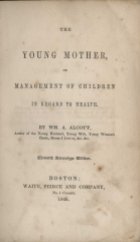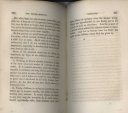Back in 2012, one of my early posts on a children’s cookbook was about the two copies of The Mary Frances Cook Book or Adventures Among the Kitchen People that we had in our collection. While that post was about the two different covers between editions of the same year, at the time, I didn’t do much research into Mary Frances as a character. A couple of months, completely by chance, I discovered she was the star of not only one book, but seven! Not only that, we had two more on our shelves!
First, there’s The Mary Frances Sewing Book; or, Adventures Among the Thimble People (1913).
Our copy is actually a 1997 reprint, which is why the cover looks newer, but the contents are the same as the 1913. The preface references the previous volume from 1912, and the style is much the same. This book combines stories, fairy tale-esque characters, simple lessons (in this case, patterns and stitches) to teach lessons and sewing and mending. (I love how nicely illustrated these books are!)
The other title, which I happened to spot on the shelf while I was browsing for something completely different, is The Mary Frances Garden Book: or, Adventures Among the Garden People (1916).
Our copy is an original 1916 (as you can see from some of the wear and tear). One additional element of this book is that it includes little garden cut-out pieces and fold out pages in which to place them. Our copy has a number of loose cut-outs tucked in among the pages and even some slits in pages to suggest it saw some use from some little girl or boy.
The whole series (as far as I can tell) consist of seven books, published over 9 years:
- The Mary Frances Cook Book or Adventures Among the Kitchen People (1912)
- The Mary Frances Sewing Book; or, Adventures Among the Thimble People (1913)
- The Mary Frances Housekeeper, or, Adventures Among the Doll People (1914)
- The Mary Frances First Aid Book: with Ready Reference List of Ordinary Accidents and Illnesses, and Approved Home Remedies (1916)
- The Mary Frances Garden Book: or, Adventures Among the Garden People (1916)
- The Mary Frances Knitting and Crocheting Book, or, Adventures Among the Knitting People (1918)
- The Mary Frances Story Book: or, Adventures Among the Story People (1921)
Given the time period, this series appears to have been a multi-volume tutorial for young girls. It covers skills they would have been expected to have as wives, mothers, leaders of a family, and as educators of future children. Their storybook style and fairy tale themes can make them a little deceptive, but the lessons are clearly there. My lesson from this post? I have some more Mary Frances books to track down so we can complete our set!

























































